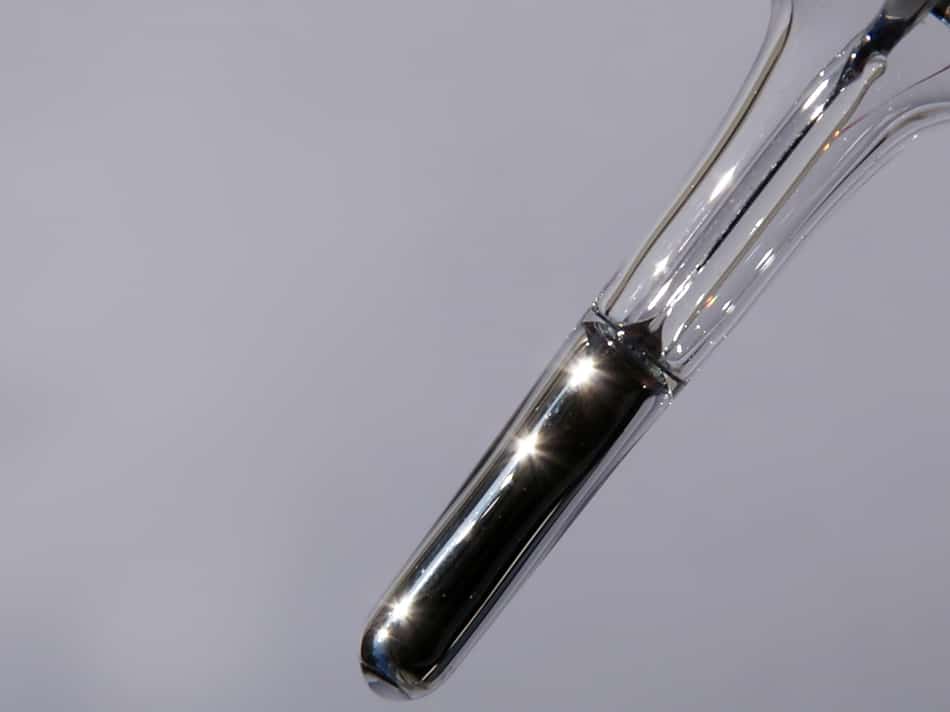
At the very beginning of your metal detecting journey you will start asking all sorts of questions about your machine. One of the questions that I’ve asked myself at the beginning and that you are probably asking. Is the ability of your device to detect Mercury.
So, can metal detector detect mercury? Yes, most metal detectors can easily react to mercury. Despite its poor ability to conduct heat, this element has a significant capability to conduct electricity. Not to mention the fact that it is diamagnetic. This makes it even easier to your machine to catch back the magnetic signals arising from mercury.
It is interesting to understand the family of detectable metals that mercury belongs to. Thus, you will have a better Idea on what your machine is designed for. I would also love to add the ways you should opt for to detect this element by including few recommendations on the machine you should be using. Plus other must-know information about liquid Mercury itself …
Mercury is a Detectable Metal …
There are mainly 2 different types of metals that you should be aware of! Ferrous metals and non-ferrous metals … There are other experts who tend to add a third category which is stainless steel! The latter is normally a non-ferrous metal, yet due to its specific characteristics and different types and forms specialists tend to put it in a separate category!
Mercury, on the other hand, is considered as a non-ferrous metal as its composition lacks significantly of iron. Non-ferrous metals have generally specific characteristics that make it usable for the industry. There are many examples of that such as Aluminum, copper …
Valuable Metals such as Gold, Platinum and silver also fall into this category! Alongside with some rare metals … Mercury and tungsten are the most common examples.
Keep in mind that all non-ferrous metals are easily detectable by your device (This obviously includes Mercury). The only problem that you might encounter is how good is actually your machine at discriminating ferrous metals? The Latters are usually junk and don’t represent any significant value.
In fact, many people keep saying that all what I find is junk or rubbish metal. And I can’t find non-ferrous/valuable ones. So they start questioning whether their machine can actually detect them.
The problem here is far from questioning the machine detectability. The real issue is that your machine is not good enough in discriminating ferrous metals. Or you have a decent machine, but you didn’t learn it enough to implement a proper discrimination.
I hope that makes sense …
What Metal Detector for Mercury?
I’ve said this is before; Mercury is a rare liquid Metal that you would hardly get a piece of. I will elaborate later in this post on some locations where there are significant chances finding it. One of these places is sea, lakes and highly soaked grounds that are near industrial firms producing or using this element in their production chain.
So, if you’ve ever asked the question how to detect mercury? The answer to that starts by being able to locate these kinds of places …
Now, you should think about using the right machine for that! Obviously, it needs to be waterproof or designed for underwater metal detecting. I’ve heard there are specific mercury underwater metal detectors, yet I’ve never known about somebody who has used them before. You can make more researches on your own …
… What I suggest to you is to use The Minelab Equinox 800 (You Can Check it Here at Amazon!) …
… In fact, it is a machine that can operate on multiple frequencies, whether you are on normal water or on salt water. This will allow you to cancel all signals coming from junk metals and focus only on Mercury or any other valuable metal that you might be looking for …
… This machine allows you to improve it by using any upgraded version of the software that you can download from the Minelab website …
… However, if you are seeking for a cheaper option, you can check this cheap Garrett detector Here at Amazon! Or you may want to have a look at these low-cost machines …
Don’t confuse Mercury with Red Mercury!
There are many people who think that red mercury is a variance of the regular one! I thought this at the beginning too … But after some researches I’ve found this …
Red Mercury doesn’t refer by any mean to Mercury! Red Mercury doesn’t even exist according to Wikipedia and some trustworthy sources … There is no such a thing … it might be a miraculous element or range of elements or may turn to be a scam.
The only legit meaning I’ve found around it is in the nuclear context. Indeed, it could refer to some elements used for nuclear weapons, but this has yet to be confirmed.
So as you may’ve notices this should not be interesting for you …
Where Can Mercury Be Found?
When we talk about such a rare element, it is almost a must to have an initial idea on locations you can find it in. Let’s start with some countries that are known for this element …
… One of the most known countries by this element especially when it comes to its production is China. The quantity of mercury you can find in there probably equals to the quantity you can find in the rest of the world.
There are other countries that are also known for this element, not as much as china. But there are fairly significant quantities …
- United States.
- Mexico.
- Chile.
- Russia.
- Finland.
- Kirghizstan
- Tajikistan
- Cuba.
- Spain.
- Italy.
In addition, I’ve asked some detectorists with many years of practice about that and they’ve told me this …
- “One of the places I know of where you can find liquid mercury is old Spanish ship wrecks off Cuba and some Caribbean islands”
- “In Cuba you can actually see the mercury dripping out of the coral … Most of the times the mercury sinks into the ocean bottom until it reaches none permeable bedrock and pools there”
- “Most ships heading the Spanish main were carrying mercury as it was essential at the time to refine gold”
- “German submarines used mercury to adjust trim. Something like a ton or more. Not likely to find pools of mercury on land unless it is an illegal spill”
Hopefully this gives you a much better idea! If you know any other locations where it is likely to find this element. I’d be very happy if you let me know in the comment section below …
How does mercury look like?
I saw in some platforms that people were asking this question! That’s why I wanted to address it here pretty quickly …
… In fact, Mercury is a silver colored liquid with a serious element density. This element is commonly known in classical thermometers to indicate the temperature.
If you want to touch it with bare hands, Good luck! Because I won’t do that … it is considered toxic and it may seriously harm you. Wearing specific gloves is highly recommended in this case.
Besides its liquid form, mercury has a unique characteristic to move very quickly due to its very high surface tension. It is also considered to be significantly heavy …
Mercury has other usages that you might not be aware of! One of them is in dentistry … One of the types of dental fillings that dentists prepare are Amalgam filling. They have around 40% composition made out of Mercury. They are considered much more durable than white or composite dental fillings.
Finally, keep in mind that it has, like most metals, a freezing point (fp.) and a boiling point (bp.). The fp. is -38.8 C° and the bp. Equals to 356.7 C°. Probably, if you live in a very cold place that has such a low temperature with spills of mercury, you should expect it to be also freezing.
Where does liquid mercury come from?
There are several ways to extract pure mercury liquid that you are used to. One of them is a rock called main ore, sometimes referred as Cinnabar. This rock is rich in mercury sulfide …
… The principle of producing this liquid element is by removing the sulfur from the rock. To do so, it is common to put it under high temperatures to force mercury evaporation at its boiling point.
After that, you just catch the condensed vapor to turn it into liquid.
I didn’t want to get into much detail … The main purpose here is just to have a general idea on what the process looks like.
Conclusion
I’ve tried to share in this post all what I’ve learnt not only about detecting this metal. But also about this element itself … Hopefully, you’ve got all your questions completely answered.
Right now, I would like to hear from you! Why are you interested about detecting Mercury? Did you ever find some using your machine? I would love to hear your thoughts in the comment section below …
… Finally, if you are looking for more valuable metals! You should definitely have a look at this Gold Prospecting Post! You will learn some serious tips to come up with not only gold targets, but even gems!
